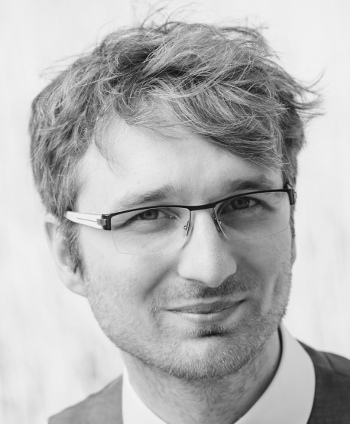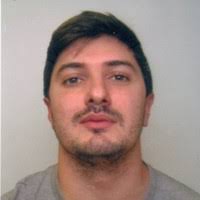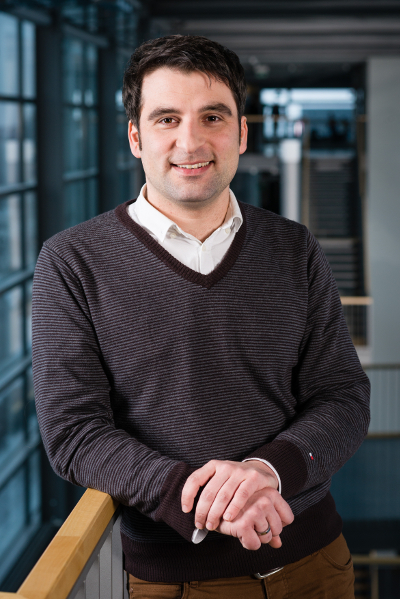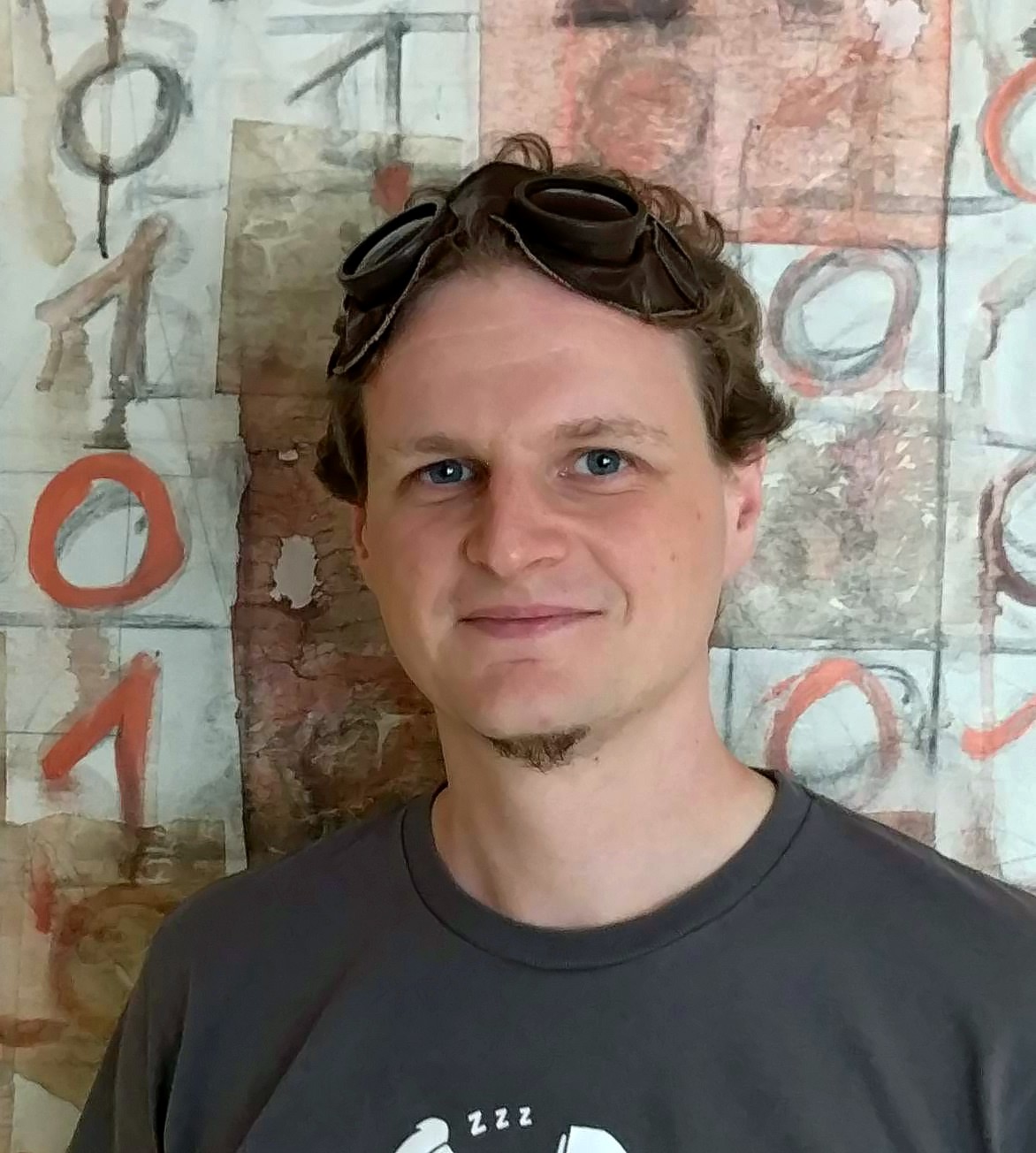
|
Michael Schaub
RWTH Aachen University |
Learning from signals on graphs with unobserved edges
In many applications we are confronted with the following system identification scenario: we observe a dynamical process that describes the state of a system at particular times. Based on these observations we want to infer the (dynamical) interactions between the entities we observe. In the context of a distributed system, this typically corresponds to a “network identification” task: find the (weighted) edges of the graph of interconnections. However, often the number of samples we can obtain from such a process are far too few to identify the edges of the network exactly. Can we still reliably infer some aspects of the underlying system?
Motivated by this question we consider the following identification problem: instead of trying to infer the exact network, we aim to recover a (low-dimensional) statistical model of the network based on the observed signals on the nodes. More concretely, here we focus on observations that consist of snapshots of a diffusive process that evolves over the unknown network. We model the (unobserved) network as generated from an independent draw from a latent stochastic blockmodel (SBM), and our goal is to infer both the partition of the nodes into blocks, as well as the parameters of this SBM. We present simple spectral algorithms that provably solve the partition and parameter inference problems with high-accuracy.
We further discuss some possible variations and extensions of this problem setup.
Zoom link
Add event to Google calendar |
February 17, 2021 |

|
Lothar Reichel
Kent State University |
Large-scale regression with non-convex loss and penalty
We do non-convex optimization with application to image restoration and regression problems for which a sparse solution is desired.
Zoom link
Add event to Google calendar |
February 4, 2021 |

|
Gianluca Ceruti
University of Tuebingen |
Numerical integrators for dynamical low-rank approximation
Discretization of time-dependent high-dimensional PDEs suffers of an undesired effect, known as curse of dimensionality. The amount of data to be stored and treated, grows exponentially, and exceeds standard capacity of common computational devices.
In this setting, time dependent model order reductions techniques are desirable.
In the present seminar, together with efficient numerical integrators, we present a recently developed approach: dynamical low-rank approximation.
Dynamical low-rank approximation for matrices will be firstly presented, and a numerical integrator with two remarkable properties will be introduced: the matrix projector splitting integrator.
Based upon this numerical integrator, we will construct two equivalent extensions for tensors, multi-dimensional arrays, in Tucker format - a high-order generalization of the SVD decomposition for matrices. These extensions are proven to preserve the excellent qualities of the matrix integrator.
To conclude, via a novel compact formulation of the Tucker integrator, we will further extend the matrix and Tucker projector splitting integrators to the most general class of Tree Tensor Networks. Important examples belonging to this class and of interest for applications are given, but not only restricted to, by Tensor Trains.
This seminar is based upon a joint work with Ch. Lubich and H. Walach.
Zoom link
Add event to Google calendar |
January 13, 2021 |

|
Alexander Viguerie
GSSI |
Efficient, stable, and reliable solvers for the Steady Incompressible Navier-Stokes equations: application to Computational Hemodynamics.
Over the past several years, computational fluid dynamics (CFD) simulations have become increasingly popular as a clinical tool for cardiologists at the patient-specific level. The use of CFD in this area poses several challenges. The clinical setting places heavy restrictions on both computational time and power. Simulation results are usually desired within minutes and are usually run on standard computers. For these reasons, steady-state Navier-Stokes simulations are usually preferred, as they can be completed in a fraction of the time required to run an unsteady computation. However, in many respects the steady problem is more difficult than the unsteady one, particularly in regards to solving the associated linear and nonlinear systems. Additionally, boundary data for patient-specific problems is often missing, incomplete, or unreliable. This makes the determination of a useful model challenging, as it requires the generation of reliable boundary data without introducing heavy computational costs. This seminar will address these challenges, as well as some others, and introduce new techniques for workarounds. Results from patient-specific cases will be presented and discussed.
Recording of the talk (available to GSSI only)
Zoom link
Add event to Google calendar |
December 16, 2020 |

|
Martin Stoll
TU-Chemnitz |
From PDEs to data science: an adventure with the graph Laplacian
In this talk we briefly review some basic PDE models that are used to model phase separation in materials science. They have since become important tools in image processing and over the last years semi-supervised learning strategies could be implemented with these PDEs at the core. The main ingredient is the graph Laplacian that stems from a graph representation of the data. This matrix is large and typically dense. We illustrate some of its crucial features and show how to efficiently work with the graph Laplacian. In particular, we need some of its eigenvectors and for this the Lanczos process needs to be implemented efficiently. Here, we suggest the use of the NFFT method for evaluating the matrix vector products without even fully constructing the matrix. We illustrate the performance on several examples.
Recording of the talk (available to GSSI only)
Zoom link
Add event to Google calendar |
December 2, 2020 |

|
Patricia Diaz De Alba
GSSI |
Numerical treatment for inverse electromagnetic problems
Electromagnetic induction surveys are among the most popular techniques for non-destructive investigation of soil properties, in order to detect the presence of both ground inhomogeneities and particular substances. Frequency-domain electromagnetic instruments allow the collection of data in different configurations, that is, varying the intercoil spacing, the frequency, and the height above the ground.
Based on a non-linear forward model used to describe the interaction between an electromagnetic field and the soil, the aim is to reconstruct the distribution of either the electrical conductivity or the magnetic permeability with respect to depth. To this end, the inversion of both the real (in-phase) and the imaginary (quadrature) components of the signal are studied by a regularized damped Gauss-Newton method. The regularization part of the algorithm is based on a low-rank approximation of the Jacobian of the non-linear model. Furthermore, in many situations, a regularization scheme retrieving smooth solutions is blindly applied, without taking into account the prior available knowledge. An algorithm for a regularization method that promotes the sparsity of the reconstructed electrical conductivity or magnetic permeability distribution is available. This regularization strategy incorporates a minimum gradient support stabilizer into a truncated generalized singular value decomposition scheme. The whole inversion algorithm has been enclosed in a MATLAB package, called FDEMtools, allowing the user to experiment with synthetic and experimental data sets, and different regularization strategies, in order to compare them and draw conclusions.
The numerical effectiveness of the inversion procedure is demonstrated on synthetic and real datasets by using FDEMtools package.
Zoom link
Add event to Google calendar |
November 20, 2020 |

|
Christian Lubich
University of Tuebingen |
Dynamical low-rank approximation
This talk reviews differential equations and their numerical solution on manifolds of low-rank matrices or of tensors with a rank structure such as tensor trains or general tree tensor networks. These low-rank differential equations serve to approximate, in a data-compressed format, large time-dependent matrices and tensors or multivariate functions that are either given explicitly via their increments or are unknown solutions to high-dimensional evolutionary differential equations, with multi-particle time-dependent Schrödinger equations and kinetic equations such as Vlasov equations as noteworthy examples of applications.
Recently developed numerical time integrators are based on splitting the projection onto the tangent space of the low-rank manifold at the current approximation. In contrast to all standard integrators, these projector-splitting methods are robust to the unavoidable presence of small singular values in the low-rank approximation. This robustness relies on exploiting geometric properties of the manifold of low-rank matrices or tensors: in each substep of the projector-splitting algorithm, the approximation moves along a flat subspace of the low-rank manifold. In this way, high curvature due to small singular values does no harm.
This talk is based on work done intermittently over the last decade with Othmar Koch, Bart Vandereycken, Ivan Oseledets, Emil Kieri, Hanna Walach and Gianluca Ceruti.
Zoom link
Add event to Google calendar |
November 18, 2020 |

|
Raffaele D’Ambrosio
University of L’Aquila |
Structure-preserving numerics for stochastic differential equations
Modern Numerical Analysis is not only devoted to accurately approximating the solutions of various problems through efficient and robust schemes, but also to retaining qualitative properties of the continuous problem over long times. Sometimes such conservation properties naturally characterize the numerical schemes, while in more complex situations preservation issues have to be conveyed into the numerical approximations. The talk is focused on presenting recent advances in structure-preservation issues for selected stochastic differential equations satisfying some characteristic invariance laws. The behaviour of stochastic multistep methods in the preservation of mean-square contractivity will be analyzed; we show, in this case, that conservation properties are hidden, as a matter of fact, into conditional stability properties of numerical schemes. The analysis will also be conveyed to the discretization of stochastic Hamiltonian problems for the numerical preservation of the behaviour of the expected Hamiltonian. The theoretical analysis will also be supported by the numerical evidence.
Zoom link
Add event to Google calendar |
October 28, 2020 |

|
Giacomo Baggio
University of Padua |
From Model-Based to Data-Driven Control of Network Dynamics
The control of complex dynamical networks has attracted increasing interest over the past few years, with reference, in particular, to problems of controllability, optimal input design, and minimal actuator placement. In this talk, I will address the problem of controlling linear dynamical networks from a control-energy or “practical” perspective. I will first focus on the model-based scenario and review the fundamental metrics, theoretical limitations, and challenges in controlling networks using a limited number of control nodes. In particular, I will emphasize the impact of the “degree” of non-normality of the network’s adjacency matrix on the control performance. Then, I will switch to a data-driven scenario, and show how some network control problems can be efficiently solved by relying on experimental data only.
Zoom link
Add event to Google calendar |
October 14, 2020 |

|
Federico Poloni
University of Pisa |
Inverses of quasidefinite matrices in block-factored form, with an application to control theory
(joint work with P. Benner)
We describe an algorithm to compute the explicit inverse of a dense quasi-definite matrix, i.e., a symmetric matrix of the form $[-BB^T, A; A^T, C^TC]$, with the (1,1) block negative semidefinite and the (2,2) block positive semidefinite. The algorithm is a variant of Gauss-Jordan elimination that works on the low-rank factors $B$ and $C$ directly without ever forming those blocks. The individual elimination steps amount to a transformation called principal pivot transform; it was shown in [Poloni, Strabic 2016] how to perform it by working only on $A, B, C$, and we rely on that procedure here. We discuss the stability of the resulting method, and show how the algorithm (and in particular the produced low-rank factors) can be of use in control theory, in the context of the matrix sign iteration, which is a method used to solve algebraic Riccati equations.
Zoom link
Add event to Google calendar |
September 30, 2020 |










